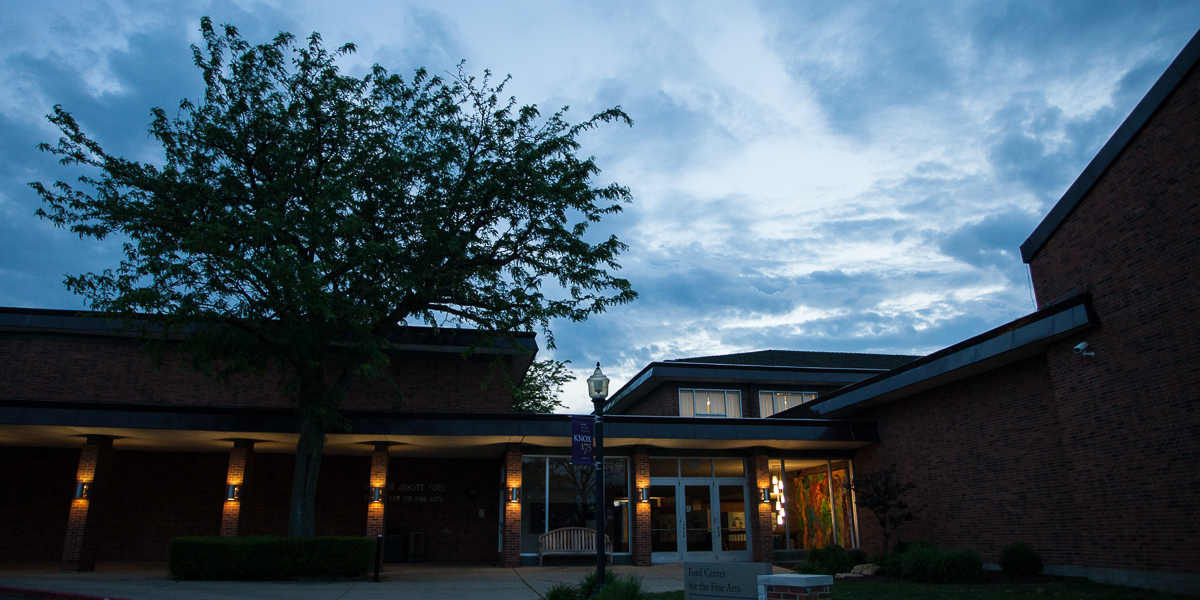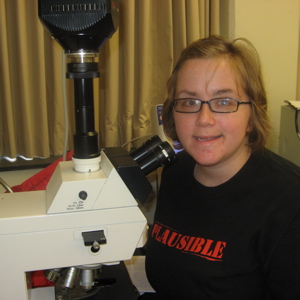

Venture Boldly

Office of Communications
2 East South Street
Galesburg, IL 61401

 Mandy Smith?s voice perks up at the mention of research, labs and genes. As an undergraduate science researcher, Smith '08, is studying chromosome 21 genes and their susceptibility to Down Syndrome. ?The beginning work of research is very hard because it?s repetitive, and I am working with staining tissue samples right now. The impact of the results will happen later when I compile the data, but I want to figure out why this happens,? Smith said.
Mandy Smith?s voice perks up at the mention of research, labs and genes. As an undergraduate science researcher, Smith '08, is studying chromosome 21 genes and their susceptibility to Down Syndrome. ?The beginning work of research is very hard because it?s repetitive, and I am working with staining tissue samples right now. The impact of the results will happen later when I compile the data, but I want to figure out why this happens,? Smith said.
As a biology major and studio art/photography minor, this Knox senior is used to looking through lenses for detail. Her honor?s project, "Nuclear Localization and RNA Expression of Intersectin in G. Gallus (chicken) and Intersectin Knockdown in X. Laevis (frog)," is the continuation of a previous lab project.
Translated, intersectin is a protein found out of place in people with Down Syndrome. The most common chromosomal abnormality found in humans, Down Syndrome occurs at a rate of 1 in 700 live births and is much more common than other genetic abnormalities.
?Two chromosome 21 genes, DSCR1 and Intersectin-1, have the potential to contribute to neurodevelopment and neurodegenerative aspects of this abnormality,? Smith says.
According to Smith, researchers discovered that the protein, normally on the inside of the cell membrane around the nucleus, is outside the wall of the cell membrane. The Intersectin is over exposed. What caused this? Smith is determined to find out. ?I love the lab,? Smith said.
She declares she found her passion for research at Knox College. High school science lab work consisted of an instruction sheet and a task to perform that yielded a foregone conclusion. But Smith says that contrary to her high school experience, her undergraduate research work at Knox is fulfilling. ?Knox fosters the trial and error in lab research.?
Although her plans are to pursue medical school, Smith says she does not rule out the possibility of a career in research. ?That is what I am supposed to be figuring out right now,? she says. ?Whether its field work, lab work, or the bio medical end of it, I like it all.?
To understand the biological function of the gene, Smith is attempting to mimic how and when the cell acquires molecules in Down Syndrome. Individuals with Down Syndrome have three copies of chromosome 21 instead of the normal two. ?Therefore, the functional characterization of genes from chromosome 21 is crucial for understanding the cause of the disorder,? she says.
With the use of an advanced technology microscope, Smith peers through the lenses looking for answers in a green fluorescent light. She notes that the first round of amino fluorescent staining was inconclusive and concedes that she could be on a wild molecular goose chase. ?Maybe intersectin is the culprit. It is easy to imagine you see something that isn?t really there. But science is about data. We?d like to think what we?re doing will be of use in the future,? she says.
Published on August 30, 2007